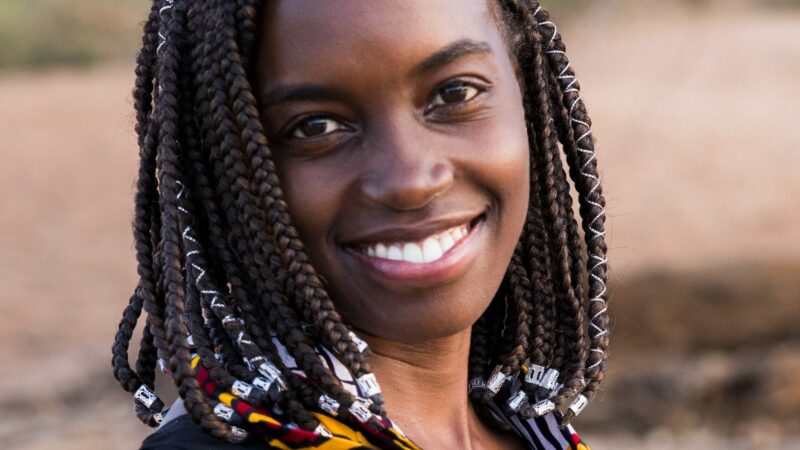
I’m sitting on the edge of the rocks, watching the sun set behind Lowua L’ongishu. The breeze has died down and long-tailed widow birds dance in the bushes below. In the distance, giraffes are running along the fringes of the Ewaso Nyiro river. I can see forever. It is where I dreamed I’d be as a little girl. But this is not my home. In fact, when I was growing up in the city, I believed places like these were nobody’s home — that they were no-man’s-land. Many Kenyans still believe this. They see these vast open spaces and see “undeveloped hinterlands,” and “empty spaces” waiting for what we have been taught is development.
I would later find out from my father that this land and many like it belong to pastoral people. These things he spoke of were a memory of a life he had lost as a sedentarized and formally educated Maasai, and that I in turn had lost as well. I still grieve this heritage that will never be mine as an urbanite, and I am aware that this consigns me to exist in in-between spaces of the urban and the indigenous. But, in that way, I still have the privilege of bearing witness to it. Nomadic pastoralists’ customs, taboos and traditions have kept land open for wildlife for generations. The decisions they have made and continue to make have forged this landscape.
With little support, however, landscapes like these began to change. Wildlife began running out of space. One of the iconic symbols of wildlife decline was lions, whose population had dropped to under 2,500 in Kenya. I joined Ewaso Lions as a co-director knowing that the approach here was different. Each program is led by local leaders with an acute understanding of the problems facing both the community and the wildlife that live alongside them. Young men, women and children were innovating to promote continued coexistence in the face of growing threats. It wasn’t an organization working “with the local communities.” It was the community.
I had never seen this before. I began contrasting what our team was doing every day with ancient models of fortress conservation that vilified Africans and broke the culture of conservation that had once existed. I grew to learn that many more organizations do similar work, and we partnered with them to amplify this new way of doing conservation.
Supporting the conservation structures built by women, children, elders and young men, and speaking about them to the world has been the joy of my life. I recently travelled to the United States with Munteli Lolparasoroi, the first traditional Samburu woman to drive a car. She is the pioneer of the Mama Simba — Mother of Lions — program. Watching her confidence in everything from lion monitoring to sharing her clear vision for Samburu women in conservation with foreign audiences is exhilarating. Before we left for the U.S., I spent time in camp where, long before the sun rises, Dr. Jessicah Kurere has already left. This young, vibrant pastoralist woman is one of the few veterinarians working at the nexus of people, wildlife and domestic animals. Jess’ team runs a mobile veterinary unit to keep disease spread between wild and domestic animals low, vaccinating, sterilizing and reigniting the people’s passion for domestic dog welfare. Hot on Jess’ heels, trying to beat the searing Samburu sun, is Lkasian Leringato, who is sometimes out on foot, following the lion tracks so he can warn other herders where the lions are. His team helps to save goats, cows and camels from the carnivores they share space with. Lkasian is the head warrior, leading a new group of young Samburu men in the Warrior Watch program. The program was founded 12 years ago by Jeneria Lekilelei to involve young men in conservation. Lkasian is part of the new generation. He attached himself to the organization as a young boy attending our Lion Kids Camp. He even changed his name to get a shot at attending the program a second time.
I say these names not just because I’m proud of our team, but so that Kenyans and the world can put faces to the owners of the “empty spaces.” I say them so that when they hear of the fact that the lion population in our area is the highest it has ever been, they will be able to trace the people whose decisions have pushed coexistence forward against all odds.
This essay is by one of this year’s Pritzker Emerging Environmental Genius Award finalists. The 2022 winner will be named on November 10.
